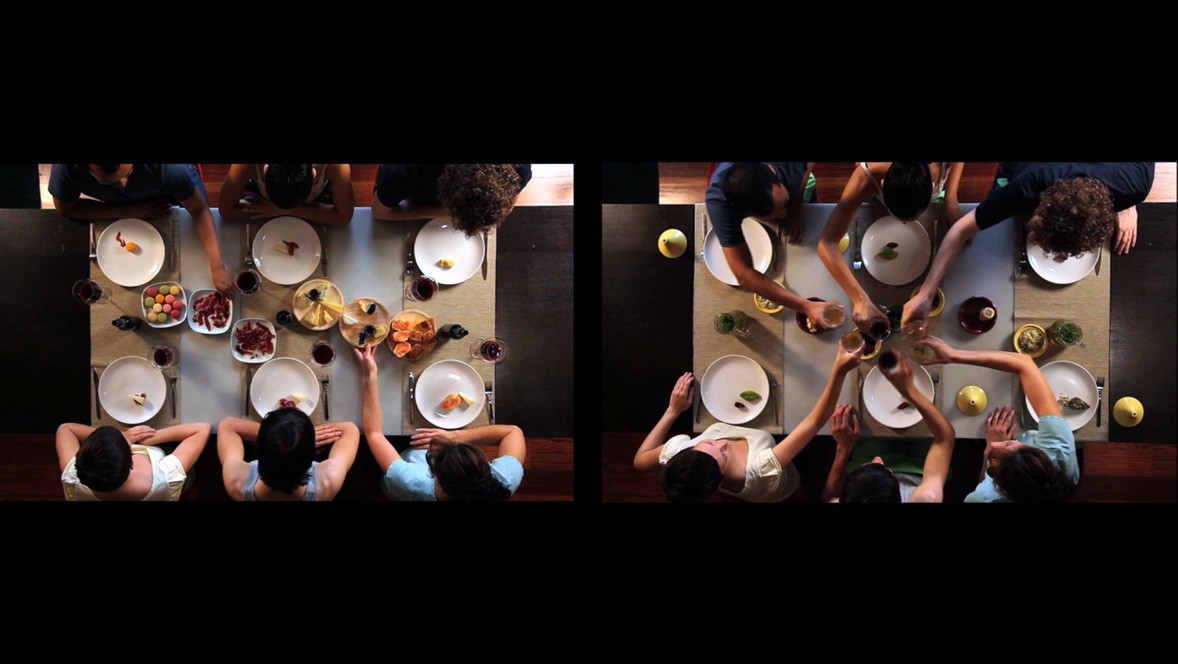Julie Rivera
The Architecture of Happiness
24 Nov 2011 - 04 Mar 2012

Julie Rivera
I enjoy my mall life / Exercise No 3, Movimiento
Videoinstalación HD doble proyección 3’48’’
I enjoy my mall life / Exercise No 3, Movimiento
Videoinstalación HD doble proyección 3’48’’
JULIE RIVERA
The Architecture of Happiness
24 November 2011 - 4 March 2012
Curator: Margarita Aizpuru
Exhibition Session: Margin and City
In our contemporary Western societies, we are witnessing processes of urban globalization, the conversion of the historic quarters of our Western cities into spaces for tourist consumption and standardized recreation, a progressive expansion and overflow of the city into spaces that were once non-urban, bucolic outlying areas - areas that are being replaced by standardized, homogenized, "banalized" urban landscapes, creating clonal repetitions in very different areas and places regardless of their historical singularity and original socio-cultural specificity. Rather than urbanization, the more appropriate term today is "urbanalization" (the "banalization" of urbanization processes); instead of citizens, we have users and/or consumers of goods and services designed by multidisciplinary teams who serve the markets and entities that create and implement the economic policies which govern our world.
Taking these premises as her starting point and armed with a series of videos of performances, photographs and scale models, Julie Rivera has articulated her exhibition project entitled La arquitectura de la felicidad (The Architecture of Happiness). From this ironic perspective, she focuses on the logic that governs itineraries, the use of spaces and time and even the bodily movements and gazes of customers in shopping centres. Rivera examines the internal organisation of such centres and the manipulation and standardization of behaviours rendered sluggish by massive doses of consumerist subliminal messages, offered up falsely and banally as a substitute for fulfilment and happiness. She also explores the generation of behavioural patterns and guidelines that produce a whole lifestyle both within and around these spaces, and the insidious spread of their formulas and strategies into historic city centres through processes of "urbanalization" and "brandification", as cities learn to manage their differences or "brands" of authenticity in the same way as today's hybrid shopping malls-cum-amusement parks are managed, "reducing the city to a mere projection of its brand image, stripping it of all its complexity, and therefore showing only its most digestible facet".
The Architecture of Happiness
24 November 2011 - 4 March 2012
Curator: Margarita Aizpuru
Exhibition Session: Margin and City
In our contemporary Western societies, we are witnessing processes of urban globalization, the conversion of the historic quarters of our Western cities into spaces for tourist consumption and standardized recreation, a progressive expansion and overflow of the city into spaces that were once non-urban, bucolic outlying areas - areas that are being replaced by standardized, homogenized, "banalized" urban landscapes, creating clonal repetitions in very different areas and places regardless of their historical singularity and original socio-cultural specificity. Rather than urbanization, the more appropriate term today is "urbanalization" (the "banalization" of urbanization processes); instead of citizens, we have users and/or consumers of goods and services designed by multidisciplinary teams who serve the markets and entities that create and implement the economic policies which govern our world.
Taking these premises as her starting point and armed with a series of videos of performances, photographs and scale models, Julie Rivera has articulated her exhibition project entitled La arquitectura de la felicidad (The Architecture of Happiness). From this ironic perspective, she focuses on the logic that governs itineraries, the use of spaces and time and even the bodily movements and gazes of customers in shopping centres. Rivera examines the internal organisation of such centres and the manipulation and standardization of behaviours rendered sluggish by massive doses of consumerist subliminal messages, offered up falsely and banally as a substitute for fulfilment and happiness. She also explores the generation of behavioural patterns and guidelines that produce a whole lifestyle both within and around these spaces, and the insidious spread of their formulas and strategies into historic city centres through processes of "urbanalization" and "brandification", as cities learn to manage their differences or "brands" of authenticity in the same way as today's hybrid shopping malls-cum-amusement parks are managed, "reducing the city to a mere projection of its brand image, stripping it of all its complexity, and therefore showing only its most digestible facet".
